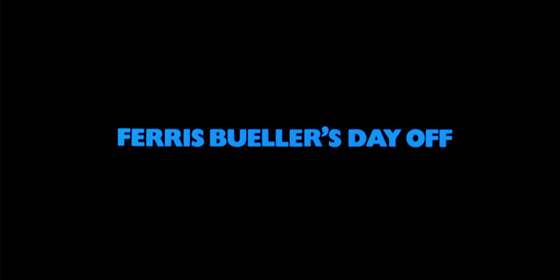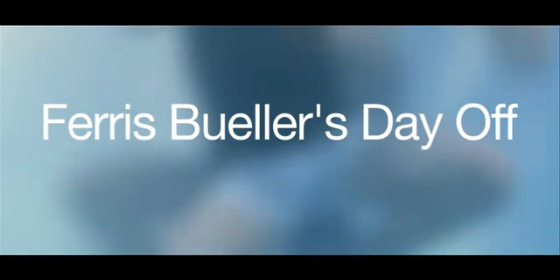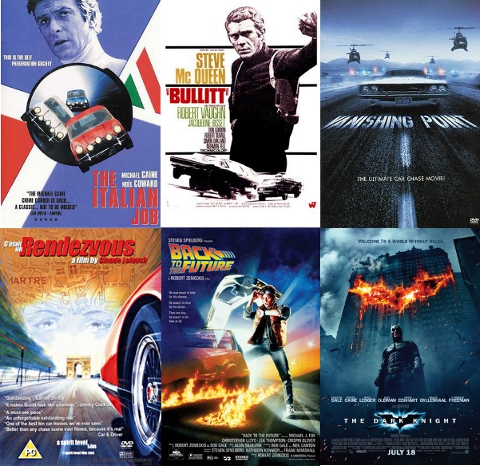Over the past couple of weeks I’ve been conducting an experiment in film watching.
The deal is that I must watch a film every day and make notes about it, with the following rules:
- I’ve already seen it
- I must make notes whilst I’m watching it.
- Pauses are allowed but the viewing must all be one session.
- It can’t be a cinema release.
The point is to capture my instant thoughts about a movie and my overall film diet for 30 days, as well as post interesting links to the film in question.
I’m going to use Storify to curate interesting links about the film under discussion and embed them in the post.
Even though the first one is an 1980s John Hughes comedy, I think in the long run you’ll find the choices eclectic.
So, this is the inaugural Film Notes post about Ferris Bueller’s Day Off (1986), which I watched on a PVR on Tuesday 20th March, after recording it on Film4 on January 1st 2012.
What follows are my notes from that viewing session (there are spoilers, so if you haven’t seen the film you’ll have to buy the DVD):
- Good to watch an 80s comedy in 2:35 aspect ratio
- Interesting use of sound to introduce the world of the film (e.g. Ferris’ mother saying his name before the opening shot)
- One of the major themes of the film is the taboo subject that parents do actually prefer a sibling
- Energetic use of music contrasts with the quiet of the opening scene
- The original Buffy (Kristy Swanson) is the girl in the class who informs Ben Stein that Ferris is absent
- Surreal device of talking to the camera with text on screen
- What other teen movies include references to the ‘Laffer Curve’?
- Ferris uses an IBM PC XT to hack into the school systems and later also uses it to draw.
- Movie references to ALIEN (1979) and DIRTY HARRY (1971)
- Ferris seems to be using the red bat phone from the Adam West TV series
- Batman connection in that Nolan’s films use Chicago for Gotham and the Windy City is also the setting for Ferris’ day off
- The idea of a lie about a dead parent an excuse for skipping school is also used in THE 400 BLOWS (1959)
- Tension between Cameron and Ferris in the kitchen is very well written and played
- Matthew Broderick has seemingly not aged since 1986
- Nice touch that we never actually see Cameron’s parents, which makes the Ferrari sub-plot feel more important
- Ferris is sort of a Bond figure: expert liar, computer expert, glamourous girlfriend, master of disguise,
- Incest gag outside the school when Sloane kisses Ferris – maybe influenced by BACK TO THE FUTURE (1985)?
- Real location shooting, rather than green screen, which is actually used (or misused) in teen comedies
- Guy at the garage looks suspicious and the reveal of his character is interesting.
- Tension of Ferris’ mother coming home to check on him is very well done with inventive staging, sound design and music
- What the hell is going on with the guys in the weird hats at the beginning of the Sears Tower sequence?
- Unusually for a teen movie Ferris actually proposes to the female lead
- The snooty (‘snotty’) waiter at the restaurant has gets his comeuppance in a very economical comedy scene
- If there’s a moral lesson in the film it’s that a computer is better birthday present than a car
- Scene where Ferris’ dad narrowly misses him in the restaurant is heavily stylised – almost as if Bunel did an 80s teen movie
- Wrigley Field makes another appearance in the movies e.g. THE BLUES BROTHERS (1980) and THE NATURAL (1984)
- Note the gag that Principal Rooney knows nothing about sport, as the cook deliberately says the Bears (football) are playing instead of the Cubs (baseball)
- Slow motion Ferrari sequence doesn’t appear to be using the London Symphony Orchestra version of the STAR WARS (1977) theme.
- Museum sequence has a definite Sofia Coppola vibe – you can see why it was used for a YouTube mash up
- Scene where Ferris notices his Dad in the car is a good example of a ‘Texas Switch’ – an old Western trick of switching actors which is also used at the end of ESCAPE FROM NEW YORK (1981)
- Did the float sequence get good production value out of a real parade?
- John Hughes movies are filled with doubt about the future, reflecting the very real anxieties of teenage years. But he finds reassuring comedy in this.
- Rooney’s middle fingered salute to the florist is comedy gold.
- Notice how Jeannie’s emergency phone calls don’t have any reply audio
- Cameron’s shock at the mileage on his Ferrari is depicted as a cut to black which is actually the inside of his mouth
- Cameron flipping out in the pool is similar to a scene in THE DESCENDANTS (2011)
- Charlie Sheen cameo (“are you in for drugs!”) actually prophetic about his later problems.
- Great close up of Jeannie’s fist and the sound of the knuckles cracking is a good pay off to the gag that Sheen knows Ferris
- Good tension as Cameron kicks the car – cutting, sound and dialogue all create the idea that the car is almost a living, breathing thing.
- Cheesy 80s music used for Cameron and Mia Sara’s final scene
- Her final line is “he’s going to marry me!” – maybe partly why it so popular with boys and girls
- Ferris is celebrated for being a liar and Jeannie is punished for telling the truth
- Interesting use of Steadicam and slow motion in the final chase sequence
- Climax well handled – the love of a teenage sister trumps her jealousy
- Good script pay-off with the baseball he caught at Wrigley Field to turn off the stereo
- Final freeze frame of Ferris was used on some posters (I think)
- Post-credits screen is a role reversal for the teacher – he has to endure the humiliation of a school bus ride (“Rooney eats it!”)
- Playful final scene is Ferris telling the audience to stop watching – perfect for the VHS era where multiple viewings would reveal this.


